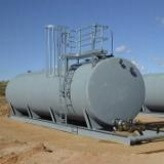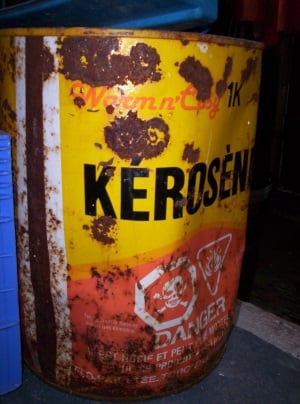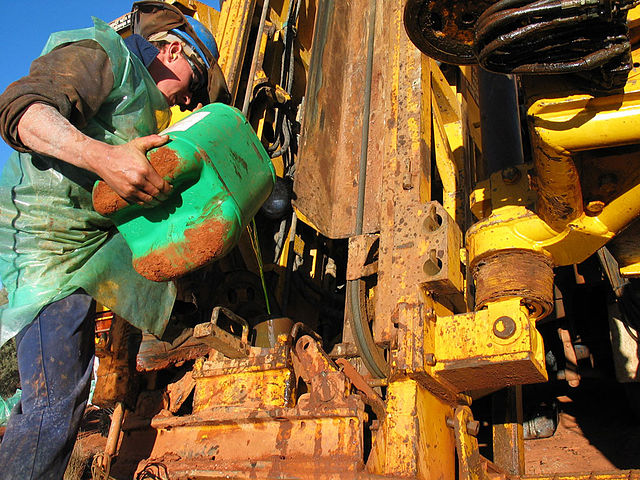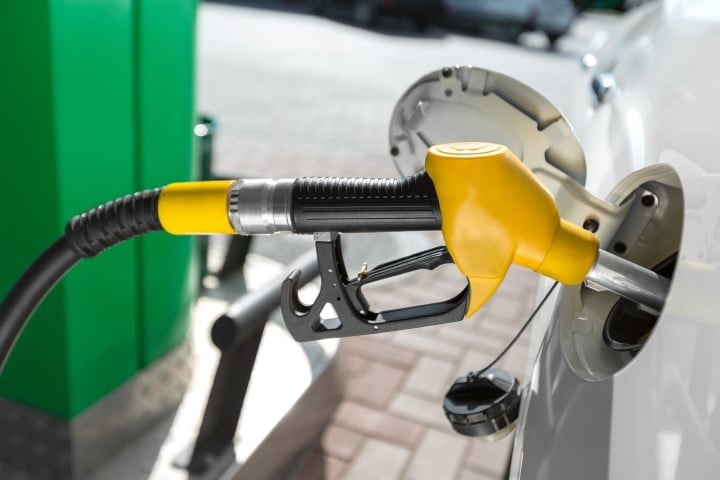How Biofuels Have Changed the Fuels We Use Today: Part 1
As a service to our customers, dealers and friends, Bell Performance hosts quarterly webinars on fuel topics of interest to them and their customers....

As a service to our customers, dealers and friends, Bell Performance hosts quarterly webinars on fuel topics of interest to them and their customers. The following is a transcript of a recent webinar I hosted on the topic of biofuels and the impact they have had on today's fuels. If you would like to view the archived webinar, you can watch it on our YouTube channel here..
If you would like to read part 2, please click here. Click here to jump to part 1.
Continued from Part 2.
All right, now let’s transition into more business issues.
We talked about things, the mileage and the small equipment damage and food prices. That’s by and large, those are the things that consumers are concerned about, but businesses are the ones that really have a lot at stake because they’re not worried about losing 100 bucks, they’re worried about the 5 or 6-figure cost, capital costs and investments that they have sunk into their fuel management.
Storage Stability Issues
 With businesses, the problems with ethanol being so widespread in the fuel, first, poor storage stability. It used to be that you could get 1 to 2 years out of regular gasoline back in the day. Now if you have gasoline that’s got 10% ethanol mixed into it, your storage life can be as little as a month. It’s a big difference between a month and 2 years.
With businesses, the problems with ethanol being so widespread in the fuel, first, poor storage stability. It used to be that you could get 1 to 2 years out of regular gasoline back in the day. Now if you have gasoline that’s got 10% ethanol mixed into it, your storage life can be as little as a month. It’s a big difference between a month and 2 years.
Why is that? Well, mainly caused by this phenomenon called phase separation. Phase separation, in order to understand the phenomenon, we’ve already mentioned that ethanol, alcohol in general are hygroscopic, just like biodiesel, they’re hygroscopic, that means they attract water. If you have a 10% ethanol blend, it will attract water and absorb water out of the environment, out of the air around it. All gasoline has a limit to the amount of water that it can absorb. If it crosses that limit, then what happens is, the ethanol, the alcohol that used to be seamlessly blended into it, will start to separate out, it will start to drop out. It will carry water with it and you’ll get a layer of ethanol-rich water as you see on the illustration that you’ll get a layer of ethanol-rich water at the bottom of the storage tank, and then the gasoline is sitting on top. That is phase separated gasoline.
Now the question that comes to mind is, so what? Why is this a problem? Well, it’s a problem because in general phase separation destroys fuel quality.
Now there’s a couple of problems here, first one if an engine happens to get some of that ethanol water, let’s say it gets drawn up into the fuel intake line and there was burning gasoline, all of a sudden they get the slug of this alcohol and water, the alcohol and water burns at a higher temperature than the gasoline and you can get pretty serious catastrophic valve or engine damage, that happens. That’s a catastrophic scenario.
The more likely scenario is the problem of stripping the octane out of the gasoline. Remember we said that refiners use that 10% ethanol mandate to help make up part of that octane value. If some of that ethanol drops out of the gasoline, the gasoline that’s left is going to have lost actually more octane than the ethanol contributed to. What I mean is if it was an 86-base gasoline which means 3 octane points were being contributed by the ethanol and let’s say theoretically that all of that ethanol drops out, the octane value that’s left behind and the gasoline that left behind isn’t just going to be 86, it’s probably going to be 85 or 84 because the ethanol will actually strip out more of the octane than it contributed.
What you’re left behind with many times is a layer of gasoline that is extremely poor quality, may not even burn properly, and that’s a huge problem when you’re talking about any kind of critical use engine or mission critical area which has gasoline in there that has to power something that needs to work on a moment’s notice. If you’re not confident that the gasoline in there will do what it needs to when you need it to, well then you’ve got some headaches, you’ve got some real, real problems.
Tank Erosion
 Phase separation is a huge reason why gasoline does not have anywhere near the storage life that it used to have. All right, third one, tank erosion.
Phase separation is a huge reason why gasoline does not have anywhere near the storage life that it used to have. All right, third one, tank erosion.
Ethanol corrodes and damages storage tanks over time because of 2 things. First thing is that it attracts water, as we said, and as you would expect any time you have water contacting metallic parts, whether you’re in a storage tank or whether you’re outside, it’s the same thing, it contributes to corrosion damage.
Second thing is that we said earlier that ethanol and biofuels are excellent fuels for microbes. Well there are certain kinds of microbes that love to consume ethanol and when they consume ethanol they produce acidic acid and that acidic acid will corrode tank parts both below the fuel line and also above the fuel line. That’s where you see there, you see acid vapor corrosion. The acidic acid that’s being produced by these microbes will actually create … Will actually vaporize and go up into the air above the fuel line and will start to corrode the tank above the fuel line.
When you’re talking about tank storage and tank maintenance recommendations, a lot of tank manufactures will say, “Look, look inside the tank and check the upper parts of the tank and if you see corrosive indicator there, then it’s a strong indicator that there’s even worse damage down below”, because you’re seeing acid vapor corrosion damage. Any time you’re talking about tank corrosion, you’re talking about serious impact on your budget because tank corrosion, to replace parts and replace damaged tanks, is a really, really, expensive preposition. That’s where it really starts getting expensive for businesses.
Diesel users are not immune to this ethanol corrosion problem. That’s because you have a lot of the same trucks that transport diesel fuels to diesel users are also used to transport ethanol gasoline and many times, they are not cleaned out as well as they could be and so there are a lot of diesel users out there, who store diesel who are getting trace amounts of ethanol and ethanol gasoline in their diesel.
These ethanol consuming bacteria, they will find those trace amounts and they feed on them. They produce acids and they are very real and serious instances of corrosion damage in diesel tanks because of trace ethanol, switch loading contaminations. Diesel users are not immune to this.
Solving the Problems of Biodiesel
All right, so those are the main issues. Main issues with biodiesel, main issues with ethanol. Now we come down to the nitty-gritty. Some of those may resonate with you, you may have seen examples of some of those or you may be in an industry, or know somebody in an industry where if one of those problems happens, they’ve got some real serious headaches they have to deal with. People always want to know, what’s the best practice recommendation to solve the problem.
All right, so we’ll summarize some of these.
Okay, number 1, now some of the stuff we’ve already talked about so we’re not going to spend a lot of time, we’re just going to briefly touch on these points to set up some context for the solution.
Small Engine Solutions
 Okay, first one, ethanol damage to small engines, just talked about that a couple of minutes ago. The problem is that softens and damages rubber parts, causes corrosion in the carburetors, interference with the lubrication because of the simple, the characteristic of ethanol, the fact that it’s an excellent solvent, the fact that it’s hygroscopic and attracts water. Anyone who uses small engines and gas-powered equipment, whether it’s a consumer or on a larger scale a business like a municipality or landscape maintenance companies, they all have the potential to be adversely affected by this.
Okay, first one, ethanol damage to small engines, just talked about that a couple of minutes ago. The problem is that softens and damages rubber parts, causes corrosion in the carburetors, interference with the lubrication because of the simple, the characteristic of ethanol, the fact that it’s an excellent solvent, the fact that it’s hygroscopic and attracts water. Anyone who uses small engines and gas-powered equipment, whether it’s a consumer or on a larger scale a business like a municipality or landscape maintenance companies, they all have the potential to be adversely affected by this.
Now, the recommended measures to combat this problem, a couple of things. If you’re done using a piece of equipment, for example you’re getting ready to put it up for the winter they always recommend draining the fuel out. There’s no former fuel in there to have ongoing contact with the polymer parts, that’s one thing that they recommend that you do. The only other thing that you can really do to combat this is essentially treat the fuel and you treat it with a multi-function, essentially a fuel protectant. There’s a lot of options of those out there.
We’re not going to go into specific names of things, obviously Bell Performance has manufactured solutions for this. There’s a lot of other things that are all holding up their hands in the market place saying, “Oh yeah, I do that as well.” Our purpose is not to tell you which one to buy specifically, our purpose is to tell you what you want to look for, the characteristics that you want to look for here. What you want to look for is 3 main things. It has to have something that acts as a surface protector. Essentially, it creates a boundary layer of protection on everywhere, all the surfaces that the fuel touches and that boundary protection essentially acts as a shield or as a protective layer and helps to slow the solvency damage phenomenon.
It also needs to have detergency, because any time you put ethanol in an engine it’s going to start … If it’s dissolving any of the polymers, those polymers end up being deposited in other areas of the engine. That’s what causes performance problems, if not total destruction of the engine. You need something that’s got a good detergent package in it to help carry these things through to the combustion changer and get them out of there where they can be burned. Then big one, it needs to fight phase separation. What mean by that is that is it needs to improve the ethanol blend’s ability to absorb water and resist it’s urge for the alcohol to separate out.
Those are the 3 main things that you need to look for.
Phase Separation and Storage Solutions
 Related problem, phase separation and storage. We talked about the fact that storage life was so much less that previously and that’s because the problem, dropout dissolves ethanol and gasoline because it has absorbed too much water and because of that essentially the fuel, the gasoline that’s left behind, it’s fuel quality, it’s combustion quality, has been destroyed.
Related problem, phase separation and storage. We talked about the fact that storage life was so much less that previously and that’s because the problem, dropout dissolves ethanol and gasoline because it has absorbed too much water and because of that essentially the fuel, the gasoline that’s left behind, it’s fuel quality, it’s combustion quality, has been destroyed.
Anyone who stores gasoline, mostly on the B to B side are going to be affected. Again, most consumers, the only skin they have in the game really is they got … They might have a couple gallon gas canister that they store gas in but, a municipality, a business that has a fleet of gas-powered vehicles that maybe has a fuel storage tank, now you’re talking about big investments in that fuel which are put at risk by this phase separation phenomenon.
We just said, a minute ago, what the recommended measure would be. You can’t keep the fuel from absorbing water. You just can’t do that. What you need to do is you need to treat it with something that improves the fuel’s ability to absorb water and resist this phase separation. That’s really about the only thing that you can do as a preventive measure to keep that from happening.
Storage Tank Corrosion Solutions
Storage tank corrosion. Big problem, big expensive problem because of 2 main things. Water absorption from the environment and acidic byproducts from microbes that live in the fuel and in the storage tank. Again, anyone who stores fuel, has the potential to be affected by this. The recommended measures. 3 main recommended measures.
Keep the free water under control by checking the tank for water and removing the free water layer as often as possible. If you do it once a month you’re probably ahead of the game compared to everyone else, so at least once a month you need to do that and then you need to apply biocides, biocide treatment to the fuel and that’s the only thing that will actually kill the microbes, keep them under control.
Then the third one, there are anti-corrosion tank treatments which act in the same way as these ethanol protectants do. They have fairly low treat rates, Bell Performance has one of them called Tank Treatment FCF there are other things you can use as well. That’s the third recommended measure that you can use.
Teddy has asked or Ted has asked, a lot of talk about gasoline, are these measures all the same for diesel fuel?
Well since you asked, we are actually getting ready to transition into the biggest problem that diesel fuel has. Then, of course, we can answer that question for you Ted. Fourth one, fuel and tank microbes, this is your diesel problem Ted.
Continue reading How Biofuels Have Changed the Fuels We Use Today: Part 4
As a service to our customers, dealers and friends, Bell Performance hosts quarterly webinars on fuel topics of interest to them and their customers....

As a service to our customers, dealers, and friends, Bell Performance hosts quarterly webinars on fuel topics of interest to them and their...

As a service to our customers, dealers and friends, Bell Performance hosts quarterly webinars on fuel topics of interest to them and their customers....